Vox Reporters Travel More Than 3,000 Miles of Missouri’s Back Roads
‘Our Blue Highways’ Project Wins National Recognition for Best Use of Multimedia
By Carson Kohler
Devil’s Elbow, Mo. (May 20, 2015) — On a long drive south of Columbia, we pulled up to a biker bar along old Route 66. The town of Devil’s Elbow is named, so they say, for the devilish time loggers had coaxing logs around a sharp bend in the river. Here at the Elbow Inn, motorcycles line up outside the front door and a colorful collection of bras hang from the ceiling.

I turned to my reporting partner, Alexa Ahern. It was obvious we wouldn’t fit in – two Mizzou journalism students dressed in boots and scarves. But we took one look at each other, and then we pushed open the spring door and entered the dark bar.
This was just one of many reporting pit stops on our mission for Vox Magazine. Published in December 2014, the “Our Blue Highways” project sent 12 reporters in teams of two on a journey of discovery around mid-Missouri. Covering more than 3,000 miles, the reporters traveled Missouri’s back roads hoping to capture hidden pieces of the “Show-Me” state.
The resulting six interconnected travel narratives were wrapped into a multifaceted, multiplatform presentation. The project was recently named a national finalist for “Best Use of Multimedia” in the Society of Professional Journalists (SPJ) Mark of Excellence awards. And it showed my classmates and me more about journalism – and ourselves – than we ever expected.
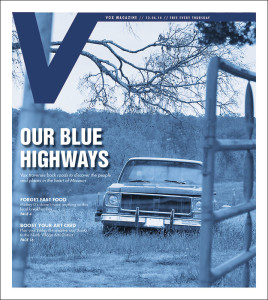
Our Inspiration
Sara Shipley Hiles, Missouri School of Journalism assistant professor and project adviser, conceived of the project as an homage to “Blue Highways,” the 1983 classic American travel book by Columbia author William Least Heat-Moon, BJ ’78.
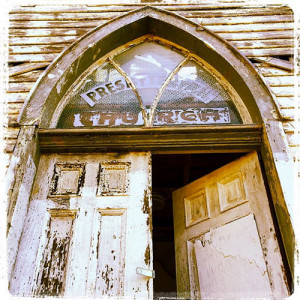
Least Heat-Moon set out on his own road trip from Columbia in 1978, following a separation from his wife and a hiccup in his career. Determined to leave his troubles in his rear-view mirror, Least Heat-Moon traveled around the country on “blue highways” – the small blue lines on vintage maps connecting those “don’t-blink-or-you’ll-miss-it towns.” He logged his experiences in his book, which sat on The New York Times best-seller list for 42 weeks.
More than 30 years later, our reporting class hoped to embody his travels. Least Heat-Moon himself made an appearance in our class. He showed us the ledgers in which he records notes by hand and inspected our handwriting. Pencil to paper, Least Heat-Moon told us, works a different part of the brain.
Our class received more guidance from John Robinson, BJ ’74, another local author. In his two books, “A Road Trip Into America’s Hidden Heart” and “Coastal Missouri,” Robinson writes about his travels on every single mile of Missouri’s highway system – a 13-year endeavor that even he admits was a bit farfetched. Robinson told us not to rely too much on our iPhones and instead use paper maps – which we had trouble folding sometimes. If his long gray ponytail and worn maps couldn’t inspire us, I don’t know what could.
Filled with advice on reporting, writing and traveling, the reporter duos hit the road. Like a compass needle against a magnet, each group chose a direction for their travels, unsure of what they would find.
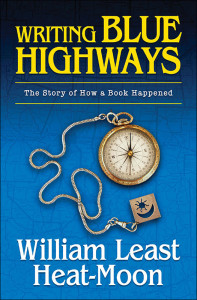
The Trip
I’m not going to lie. I was terrified as we took off on our first trip, relying on a borrowed road map from Robinson that was already proving to be delicate.
Alexa and I took pictures with our cameras and our minds as we headed south: an abandoned church, a vintage truck, a woman trying to hold her family together, a smoky cafe.
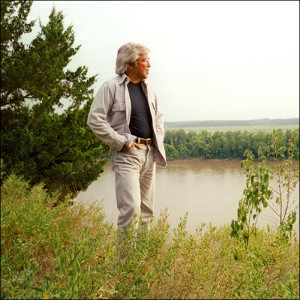
And we survived the biker bar. We ordered barbeque and chatted with locals attired in trucker hats, leather and even a Hawaiian shirt. We saddled up next to Dwayne Sheldon, an older man who enjoyed every sip of his Stag beer.
Our classmates had adventures of their own – museums, antique stores, music shops, Walt Disney’s stomping grounds, an “eco-village.” One student backed into a ditch, another discovered homemade sticky buns. Everyone found local people willing to share their stories and their pride in small-town Missouri.
We learned to talk to complete strangers, to follow leads. We became empowered, bold.
“I think I learned what it’s like to be a real reporter,” reporter Jenna Fear says. “It was the first time I went beyond just completing an assigned story and really dug into something. It showed me how much there is to find, and that I am capable of finding it. It might be the coolest thing I’ve ever done, honestly.”
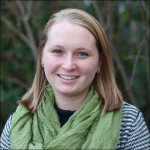
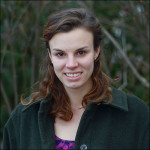
Over the course of the semester, we made return trips and wrote multiple drafts. As we became more confortable as reporters and storytellers, our writing became more insightful and sophisticated. The travelogues evolved, and the teams began to integrate their points of view.
The Final Product
Ultimately, each team wrote a dual-perspective travel narrative that incorporated the voices of both authors. The narratives were arranged in a circle around Columbia (West, North, Northeast, Southwest, South and Southeast), echoing Least Heat-Moon’s original circular journey around the States.
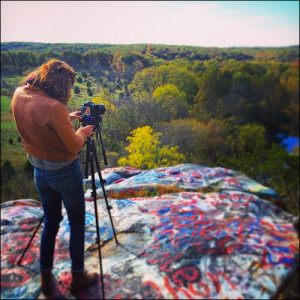
Reporters described how freeing it was to try a first-person, reported narrative. “I loved being able to just write,” reporter Candice Brew says. “I was forced to use details, anecdotes and even poetry – something I try to do all the time, now.”
We also produced six polished videos, thousands of photos, and a pile of Instagrams and tweets. These components were combined online using an interactive map.
Hiles wanted the project to be truly digital-first. “We blended old-fashioned shoe-leather reporting – or maybe I should call it tire-tread reporting – with new media techniques,” Hiles says. “We’re training students in storytelling across multiple platforms, including text, social media and video.”
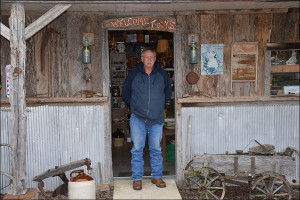
Vox Digital Managing Editor Bryan Bumgardner helped pull all of the digital strings – or codes – to make this project successful. A team of digital editors coached the reporters on using social media to document their trips. Vox Multimedia Editor Adam Harris and his team of convergence editors helped the reporters with their video projects. The mash-up of old-school reporting techniques with innovative digital storytelling made the project come alive.
This project became our lives last semester. In addition to other classes, jobs, TA positions and organizational involvement, we were pushed to our limits. But that’s how the Missouri Method prepares us for the “real world,” right? Although difficult at times, “Our Blue Highways” evolved into something beautiful.
“I’ve never put more time into another project throughout my academic career, and I don’t regret that for a second,” reporter Nikki Kottmann says. “This is the type of project that I’m going to refer back to in future job interviews, the type of project that produced stories that I’ll still be telling to my future kids when they’re in college and going on adventures of their own.”
Updated: September 8, 2020